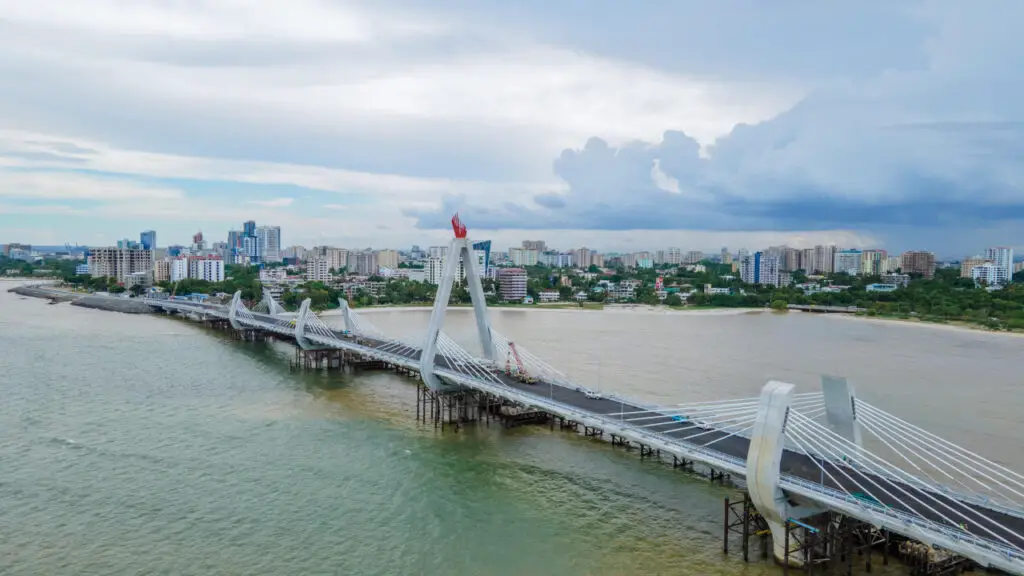- Tanzania has one of the largest international airports in East Africa
- Tanzania Standard Gauge Railway is slated to commence operation by the end of April
- Tanzania is a gateway serving competitive landlocked neighbouring countries.
Tanzania’s economy is moving at a steady pace. According to the Bank of Tanzania, the inflation rate is at 3.6 per cent, and the nation’s GDP stands at 5.2 per cent (3rd Quarter 2021).
The United Nations argues that the African Continental Free Trade Area (AfCFTA) is expected to increase intra-African trade in transport services by nearly 50 per cent.
In 2015, the African Development Bank (AfDB) approved $346.38 million to improve 500 km of roads across the country over the next five years.
On the other hand, in 2014 World Bank, another development funder to Tanzania, furnished the nation with $300 million to improve rail and transport infrastructure, which ultimately boosted intra-region trade with landlocked neighbours.
In that case, African nations with serious investment in transport economy, such as Tanzania, stand to draw billion from the latter.
The East African nation is strategizing to expand its investment horizon and advance towards being the most attractive economic hub.
Earlier this month, Tanzania’s President Samia Suluhu Hassan signed several business agreements with the United States of America, slated to be implemented in Tanzania by investors and companies from the US.
Tanzania’s national development strategy stresses utilizing infrastructures to propel the nation’s economy as an enabling sector.
Tanzania is one of the largest countries in Africa and the second largest in East Africa. With a sizeable share of transport infrastructure, Tanzania will reduce travel times, integrate the national market and connect it to other marketing in the East African Community, and eliminate non-tariff barriers to trade (AfDB).
Tanzania is geographically positioned on a very potential gateway. Tanzania is the international gateway for several of its landlocked neighbouring nations.
“Burundi, Rwanda, Uganda, DRC, Zambia and Malawi are all dependent on the country’s transport network for their access to global markets”, according to AfDB.
Tanzania’s investment in infrastructure is essential. The latter has been realized by the previous administration by the late President John Magufuli and is being progressed by President Samia’s government.
Transport in Tanzania
Road transport is essential in Tanzania and widely used—carrying over 90 per cent of the passenger and 75 per cent of the freight traffic in the country.
Tanzania’s road network has changed compared to the past three decades. Via the Tanzania National Roads Agency (TANROADS), Tanzania manages 35,000 km of 12,786 km of trunk roads and 22,214 km of regional roads. The road network is 85,000 km long.
In 2017, the World Bank provided the Tanzanian government with $255 million for the Ubungo interchange—a formerly chronic transport bottleneck of Dar es Salaam—the commercial pulse of Tanzania.
Over the past five-year, Tanzania’s transport sector has been fueled with substantial funding to transform the economy on a broader scale.
The current infrastructure projects have made some profound and recognizable changes in Tanzania’s transport sector.
The first phase of the Bus Rapid Transit system implemented in Dar es Salaam, a very populated region in Tanzania, reduced travel time by 90 minutes a day, saving commuters 16 days of sitting in traffic.
Tanzania has invested in the aviation sector, which has levitated the nation to a global stage through its state of the art international and regional airports. Tanzania has 58 airports and more than 300 private airstrips.
In 2016 air traffic grew by 2.1 per cent to 4.95 million compared to the previous year. However, the newly established Julius Nyerere International Airport (JNIA) terminal three costs around $314 million and is argued to increase airport capacity to 8 million passengers annually.
Tanzania Standard Gauge railway is yet another transformative transportation five-phase project that connects Tanzania with neighbouring countries—Burundi and DRC. The project is to replace the old, inefficient meter-gauge railway system and reduce road congestion.
Further, the $7.5 billion electrified SGR project is also expected to decrease freight costs by 40 per cent. According to information from Construction Review Online, each freight train is expected to transport up to 10,00 tonnes, which is equivalent to 500 lorry loads.
The project’s first phase from commercial pulse Dar es Salaam to Morogoro will commence operation at the end of this month.
The sector does not only facilitate domestic and international trade, but it contributes to national integration and provides access to jobs, health and education facilitates for many people.
Currently, Tanzania is marketing itself on the global stage as the most attractive place to invest, and the ongoing improvement of transportation infrastructures gives Tanzania an advantage across the region.
Read: Tanzania bidding for SGR trains
